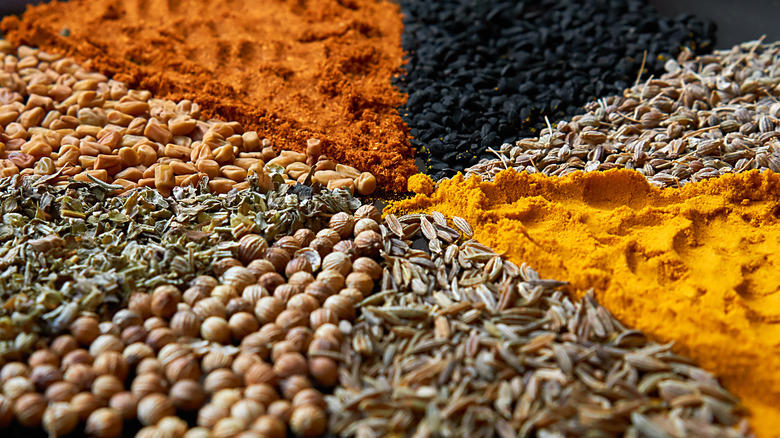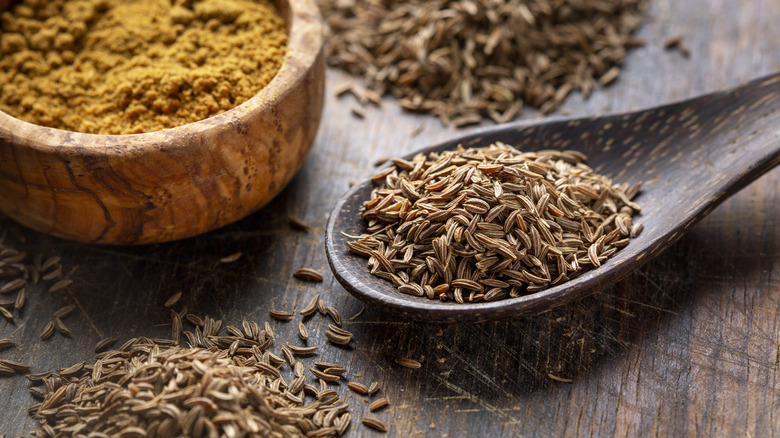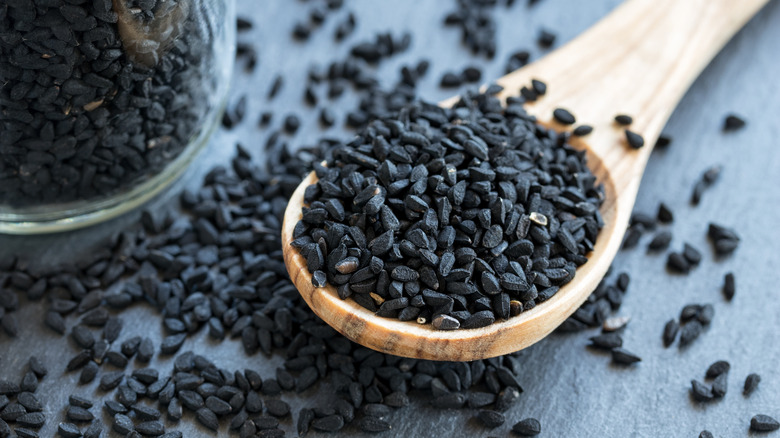Caraway Vs Nigella Seeds: Is There A Difference?
Knowing your way around a spice cabinet is an important skill for any cook to master. But some spices can make things a bit trickier, like caraway seeds and nigella seeds, which are occasionally mistaken for the same thing. The fact that both can be used as substitutes for whole cumin in a recipe leads some people to believe that caraway and nigella are actually two different names for the same spice. But the truth is that they are, in fact, quite different.
Both serve as important additions to a well-stocked kitchen and a well-versed chef will be able to use each one to create fabulous (yet different) dishes. Considering the varied colors to the contrasting flavors and the plants that they come from, these seeds are two completely different beasts. From the Middle Eastern recipes that feature the stark black nigella seeds to the cuisines of Europe that use caraway to bring deep flavor to meat dishes and breads, these two spices are worth getting to know.
Understanding the basics of caraway seeds
Caraway seeds come from the Carum carvi plant, an herb that is a member of the parsley family. The spice is commonly used in different foods ranging from meats and vegetables to soups and cheeses. It is also used by some European cultures to distill liqueurs, and is even lauded for its potential health benefits. These small, pale brown seeds are popular in many European cuisines like Germany's Schweinebraten, the Bavarian Oktoberfest dish that uses caraway seeds to flavor succulent pork roast.
Caraway is often sold as whole seeds which can be ground up into a powder form using a traditional mortar and pestle, or by using one of several alternative methods for grinding spices. It can also be used in its whole seed form, which is the most common way to find it in breads and cheeses. When using caraway, which has a taste similar to licorice — just like that of fennel and anise — it's important to remember to use restraint; The flavor is strong and too much can easily overpower a dish.
What you need to know about nigella seeds
Nigella seeds come from the Nigella sativa plant that is native to the Middle East and Southern Asia, and are often referred to as black cumin or black sesame seeds — neither of which is accurate. The flavor is similar to cumin and the appearance is comparable to a black sesame seed, but nigella seeds are members of the ranunculus family, while cumin and sesame are not.
These little flavor bombs are black and teardrop-shaped just like sesame seeds, but on closer inspection the surface of these seeds appears pitted rather than smooth. And while sesame seeds carry an earthy, nutty flavor, nigella seeds offer hints of black pepper, onion, and often oregano.
Nigella seeds are extremely popular in Middle Eastern cuisines, often appearing in rice and vegetable dishes, as well as breads — and the occasional sweet. They can either be ground into a powder and cooked into a dish, or sprinkled on top for an extra dash of flavor and crunch. Despite their versatile nature, nigella seeds seem to be only recently gaining status in American pantries. As one of the many amazing yet uncommon spices you should start cooking with, nigella seeds should be given more than a second glance when you're looking for a creative way to spice up a meal.


